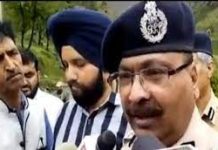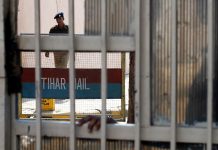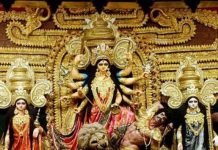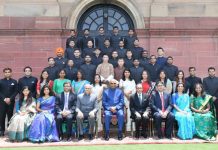After performing ‘pran pratishtha’ of the newly installed idol of a five-year-old Ram Lalla in the sanctum sanctorum of Ram temple, Prime Minister Modi invoked the universality of the spirit of Ram even as he called for humility while celebrating the historic event. A report by Mudit Mathur
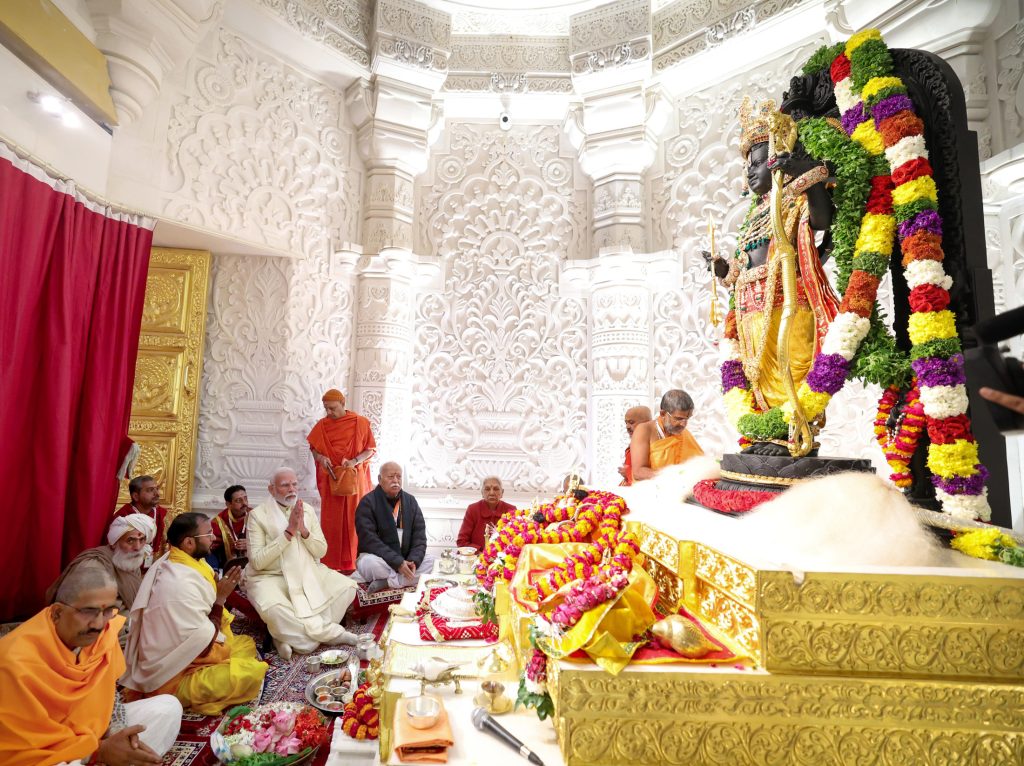
On January 22, Prime Minister Narendra Modi assumed the role of Mukhya Yajmaan (key performer) of religious rituals in Ayodhya along with Rashtriya Swayamsevak Sangh (RSS) chief Mohan Bhagwat in the sanctum sanctorum of Ram temple where magnificent ‘pran pratishtha’ or consecration of the newly installed idol of a five-year-old Ram Lalla wss done amid chanting of vedic hymns in “Abhijeet Muhurta”, which according to Vedic astrology is considered to be most auspicious period for securing victory.
Modi said it was the beginning of a new era for the country, an era that will last for centuries and called for humility while celebrating the historic day. He invoked the universality of the spirit of Ram that defines inclusiveness of humanity. After the religious rituals, Modi broke his 11-day fast that was part of his spiritual preparation for the rituals. He accepted Ram Lalla’s “Panchamrit” (five main ingredients, Yogurt (Dahi), Milk, Honey, Tulsi (basil), and Ghee from Govind Dev Giri, treasurer of the temple trust.
Modi made it a point to tell the nation that he had been at the Ram Setu a day earlier. He also recalled how Ram, too, had begun his return journey from Lanka to Ayodhya from that very spot, after defeating Ravana. He also added that he was here not without observing an 11-day fast, during which he offered prayers at select temples in the southern Indian states of Tamil Nadu, Kerala, Karnataka and Andhra Pradesh as pilgrim sites which had been associated with Lord Ram. While visiting temples in the south, he connected with the people of the south, where his party has a dismal presence politically.
In his new avtar of a Hindu prime minister, Modi in his long address pitched that Ram was not just as a deity but as an icon of governance. He emotively asserted that Ram represented the “prestige of India”, “nation-building”, and the “solution, not controversy.” He talked passionately about moving from “Dev” to “Desh” and “Ram to Rashtra” for India’s resurrection. Terming it a historic day, Modi said that it was akin to a “nation uprising by breaking the mentality of slavery, drawing courage from every disorder of the past and creating a new history”.
Addressing the selective audience soon after consecration ceremony comprising more than 8000 prominent people from all walks of life, including seers who had been involved in the Ram Temple movement, industrialists like Mukesh Ambani and his family, film stars like Amitabh Bachchan, Rajinikanth, Maduri Dixit, Ranbir Kapoor, Alia Bhatt, Kangana Ranaut and many others, Modi said, “Ram Temple is a symbol of peace, patience, harmony, and maturity of Indian society. Today, I call upon those people to rethink their perspective.”
Speaking on the inclusiveness and spirit of service of the characters in the Ramayana and the life of Lord Ram, the Prime Minister said there was much to learn from them. “We need to learn the value of service and loyalty from Lord Hanuman, resilience from Adivasi mother Shabari who had the conviction that ‘Ram will come’, while Nishad Raj had helped Ram and Sita to cross the Ganga in his boat,” he said. “Even the smallest of creatures such as squirrels had contributed to the construction of the Ram Setu, while the Jatayu had fought Ravana to save Sita knowingly that he would be defeated,” Modi added.
Modi gave credit to the apex judiciary for imparting justice in centuries old controversy but he did not mention a word about the defining role of BJP stalwarts like former deputy prime minister Lal Krishna Advani, or former BJP chief Murli Manohar Joshi, or frontline activists like Vinay Katiyar, Mahant Dharam Das and others, who are believed to have been kept away from the ceremony.
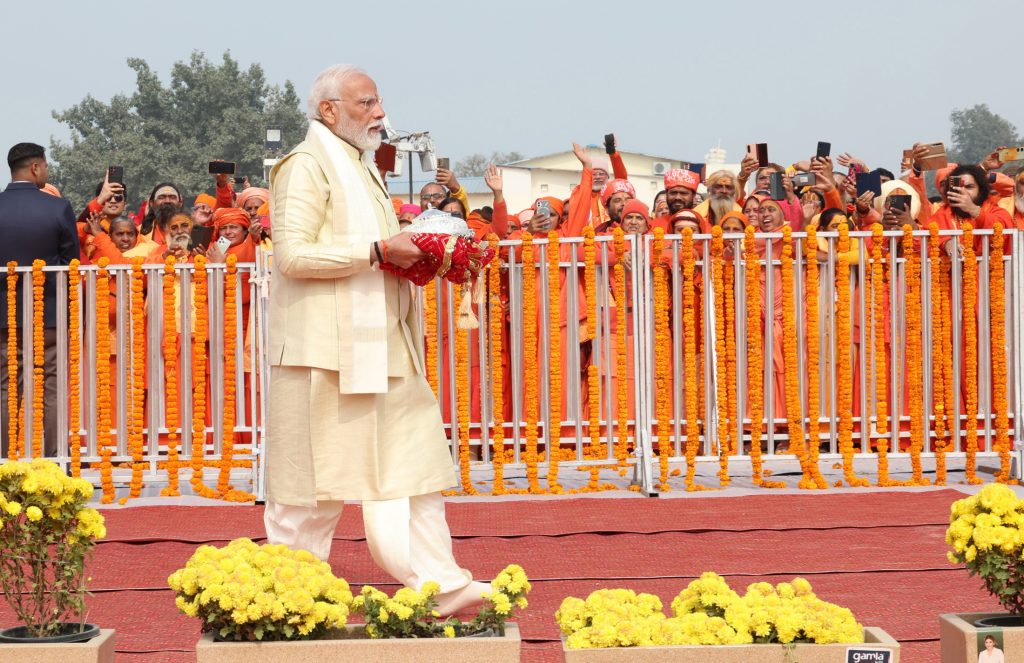
Over a dozen former judges of the Supreme Court were also present for the consecration ceremony including four former Chief Justice of India J S Khehar, Justices V N Khare, N V Ramana and U U Lalit. Justice Khehar had offered to personally “mediate” the Ayodhya dispute in 2017. The list included Justice Arun Mishra, chairperson of the National Human Rights Commission; Justice Ashok Bhushan, Chairperson of the National Company Law Appellate Tribunal among others. Justice Bhushan was part of the five-judge Constitution Bench which in 2019 cleared the decks for construction of the Ram Temple. Justice Adarsh Goel, Justices V Ramasubramanium, Anil Dave, Justice Krishna Murari, Vineet Saran and Gyan Sudha Mishra were also present. Justice Sudhir Agarwal, former Allahabad High Court judge, who was part of the 2010 High Court ruling in the Ayodhya dispute also attended the temple inauguration.
Advani spearheaded the Ayodhya movement in 1988 that culminated in destruction of Babri mosque on 6th December,1992 in his presence on the dais along with Uma Bharti, Joshi and many others who were blamed for instigating the masses. Though the apex court did not approve the act of demolition treating it criminal, a Special Trial court has honourably exonerated all the accused of demolition for want of credible evidence against them. Uma Bharti and Sadhvi Ritambhara were seen bending among thousands of saints behind the barricades when Modi took a round to express his gratitude to his specially invited audience.
The major opposition parties did not attend the Ram temple consecration ceremony in Ayodhya citing diverse points of view that it was a BJP-RSS show to garner political support in upcoming elections as the temple is yet to be completed fully. The opposition leaders cited utterances and decision of religious and spiritual heads of four seats of Shankaracharyas who had objected to the hasty decision to inaugurate the incomplete Ram temple and stayed away from the consecration ceremony in Ayodhya. Four seats (Peeth) situated in north, south, east and west are considered as ancient sources of Hindu spirituality and faith established to protect religion.
Ram Lalla’s idol, which has been installed in the sanctum sanctorum, has been made by sculptor Arun Yogiraj. The idol carved out by Mysuru-based artisan was among the three idols out of which one had to be selected to be placed in the sanctum sanctorum of the Ram Mandir. The glittering grand show – streamed live all around the world on TV channels connected with specially set up big screens in the prominent temples of Hindu faith for public viewing of the event.
Several states declared holiday for schools, while government offices, other establishments and public sector banks remained closed for half a day. Some states declared a dry day; and asked shops selling non-vegetarian food items to remain closed till evening. Saffron streamers, flags with the images of Ram, Hanuman, Sita and Lakshman and posters welcoming the arrival of Ram to his birth place Ayodhya dotted several nook and corner of the mega cities of India and abroad displaying hype of the event. People congregated in the temples that were decorated with flowers, lamps, flags and posters. In the evening, there was a Diwali-like atmosphere as earthen lamps (Diyas) were lit outside homes, shops and business establishments to mark the occasion.
Many parts in the country witnessed unpleasant sectarian clashes during celebratory aggression which led to arrests and retaliatory bulldozer actions. The euphoria erupted among the proponents of the temple after watching the central role of the state in the religious rituals associated with the inauguration of the temple is visible ubiquitously in the form of aggressive display of Hindu identity on the streets, which however does not augur well for secular character of Indian polity in the coming days.
Terming January 22 a Swarna Diwas (golden day), the RSS chief Mohan Bhagwat said Ram Lalla (child Ram) had come back to Ayodhya after 500 years. He paid tributes to all those who fought for the Ram Janmabhoomi movement. Bhagwat said Mahatma Gandhi used to say, “there was enough on earth for everyone’s needs but not for everyone’s greed.” “It should be our duty to serve people who are in crisis and pain. We must earn with both hands, keep whatever is needed for our own lives and donate everything else to charity,” the RSS chief exhorted. Uttar Pradesh chief minister Adityanath emphasised on how the ‘pran pratishtha’ marked the virtual revival of the ‘Treta Yug’ (the era of Ram).
Hours after the consecration of the Ram idol in Ayodhya, Prime Minister Narendra Modi, citing divine inspiration, publicly announced a scheme to electrify one crore households with solar electricity.
“Today, on the auspicious occasion of the consecration in Ayodhya, my resolve has been further strengthened that the people of India should have their own solar rooftop system on the roof of their houses. The first decision I have taken after returning from Ayodhya is that our government will launch ‘Pradhanmantri Suryodaya Yojana’ with the target of installing rooftop solar on one crore houses.
“This will not only reduce the electricity bill of the poor and middle class, but will also make India self-reliant in the field of energy,” Modi tweeted from his personal account. No information on a timeline for such installations was given.
Cabinet hails Modi
Country’s body got freedom in 1947 but its soul on Jan 22, 2024. Congratulating Prime Minister Narendra Modi on the consecration ceremony at the new Ram temple in Ayodhya, the Union Cabinet chaired by prime minister Narendra Modi adopted a sycophantic resolution a day after, expressing that while “the body of the country attained independence” in 1947, the “Pran Pratishtha of its soul was done on January 22, 2024”, and “everyone experienced spiritual satisfaction”.
The resolution, moved by Union Defence Minister Rajnath Singh on behalf of the Cabinet, termed the Wednesday meeting “historic… Cabinet of the Millennium” and said Modi had “fulfilled a centuries-old dream” that “Indian civilization had dreamt for five centuries.”
“The love you have received from the people has established you as a “Jan Nayak”. But, after the ushering in of the new era, you have also emerged as the pioneer of the new era,” it stated.







